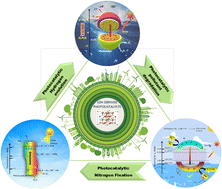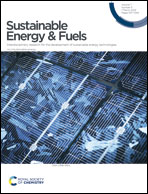A critical review on layered double hydroxide (LDH)-derived functional nanomaterials as potential and sustainable photocatalysts
Abstract
Significant advancement has been made in semiconductor-based photocatalysis to simultaneously address environmental pollution and energy dilemma, aiming toward green and sustainable technologies. Nevertheless, photocatalysis still requires cost efficient, environmentally benign, and stable semiconducting materials. Layered double hydroxides (LDHs) have developed as adjustable and multi-use semiconducting materials in the field of heterogeneous catalysis to address the ever rising needs. Apart from presenting a unique two-dimensional (2D) layered structure, tunable metal composition in brucite layers, exchangeable interlayer anion, and distinctive physicochemical characteristics, LDHs act as suitable precursors for different post-synthetic-derived bimetal products. These derived functional nanomaterials via structural topotactic transformations are capable of addressing the above specific challenges because of their inherent 2D lamellar structure, multiple heterogeneous interfaces, broad light capturing capability, uniformly dispersed acid/base sites on the surface, and thermal stability. The primary focus of this review resides on the fundamentals as well as advanced fabrication methodology of LDH-derived materials, structural design, physico-chemical characterization, and function as a cocatalyst, semiconductor, and semiconducting cocatalyst toward photocatalytic H2 production, N2 fixation, and organic pollutant degradation. In addition, the future prospects and challenges of these materials are also documented keeping in mind alterations that can be made for better performance and stability in photocatalysis.



 Please wait while we load your content...
Please wait while we load your content...